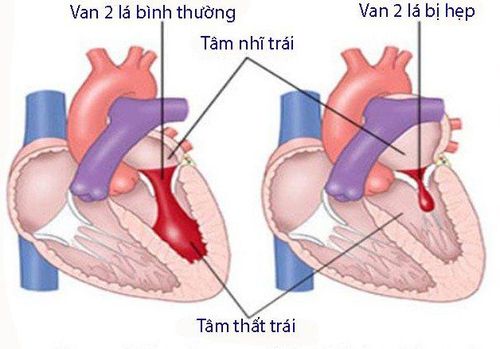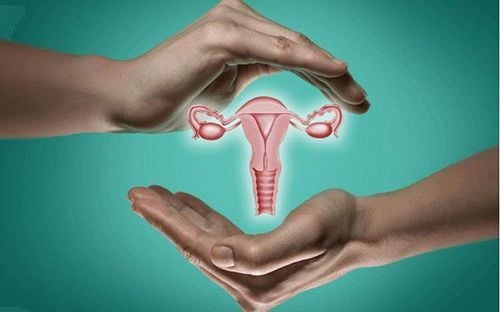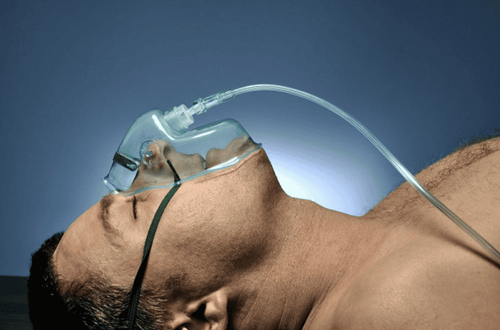This is an automatically translated article.
The article is professionally consulted by an Anesthesiologist, anesthesiologist, anesthesiologist - Department of General Surgery & Anesthesia - Vinmec Hai Phong International General Hospital.
Pregnant women with heart disease are indicated for cesarean delivery. Endotracheal anesthesia for cesarean section on people with heart disease is applied to control the patient's breathing during and after surgery.
1. Overview of endotracheal anesthesia for cesarean section in patients with heart disease
In cesarean section on a person with heart disease, the technique of general anesthesia with intubation, also known as endotracheal anesthesia, is used to control the patient's breathing during and after surgery. surgery.
Endotracheal anesthesia is indicated in pregnant women with congenital heart disease such as coarctation of the aorta, Eisenmenger syndrome, uncorrected tetralogy of Fallot; Primary pulmonary hypertension, or pregnant women with hypertrophic obstructive cardiomyopathy, ischemic heart disease, valvular heart disease such as mitral stenosis, aortic stenosis, perinatal cardiomyopathy or previous change prosthetic valve and abnormal clotting function.

2. What to prepare when endotracheal anesthesia for cesarean section on people with heart disease
To perform endotracheal anesthesia for cesarean section surgery on people with heart disease, the following means, machines, equipment and medications are needed:
The system includes an anesthetic machine (with breathing), hand squeeze oxygen, monitors of vital functions (such as arterial blood pressure, respiratory rate, temperature, ECG, EtCO2, SpO2), suction machine, defibrillator, ... Endotracheal tube sizes to place , laryngoscope, mask, straw, oropharyngeal cannula, squeeze ball, soft mandrin, Magill pliers. Salbutamol and Lidocaine 10% spray. Other means of supporting endotracheal anesthesia for cesarean section surgery on people with heart disease to prevent difficult intubation: laryngeal mask, Cook tube, flexible bronchoscope, mouth opener, gas opener manage,...

3. Procedure for endotracheal anesthesia for cesarean section on people with heart disease
Before surgery, patients need to be examined under anesthesia to promptly detect and prevent possible risks, especially cardiovascular problems, as well as evaluate the status of endotracheal intubation. difficult trachea. Need to pay attention to the signs of peripheral cyanosis, perform echocardiography, electrocardiogram for pregnant women before surgery.
The procedure for endotracheal anesthesia for cesarean section surgery on pregnant women with heart disease includes the following steps:
Step 1: Put the patient in a supine position, at least 5 minutes before induction of anesthesia, give oxygen 100 % with a dosage of 3 - 6 liters/min. Install machines to monitor, measure blood pressure invasively if necessary, set up an infusion line. If necessary, the patient can be given sedatives from the night before surgery. Step 2: Induction of anesthesia begins with intravenous injection (drugs, etomidate, propofol, ketamine, thiopental, ...), volatile anesthetics (sevoflurane...), analgesics (fentanyl, morphine, fentanyl, .. .), use a muscle relaxant if necessary (rocuronium, succinylcholine, vecuronium, ...). It is necessary to ensure conditions for endotracheal intubation during cesarean section on people with heart disease (patients sleep deeply, muscles relax enough). Step 3: Carry out oral intubation as follows: (1) Open the patient's mouth, place one hand under the neck to keep the neck upright, insert the laryngoscope to the right side of the mouth, and slide the tongue. to the left side of the mouth, insert the light deeply, and at the same time use the right hand to press the cricoid cartilage to find the lid and the glottis; (2) Perform rapid induction of anesthesia and perform the Sellick maneuver when the stomach is full (as soon as the patient loses consciousness, press the cricoid cartilage 20 - 30 kg until the intubation process is complete); (3) The next step in endotracheal anaesthesia for cesarean section in pregnant women with heart disease is to gently intubate the endotracheal tube through the glottis, when the endotracheal tube balloon passes through the vocal cords for about 2-3 hours. cm then stop; (4) Gently withdraw the laryngoscope; (5) Intubation of endotracheal balloon; (6) Listen to the lungs, see the EtCO2 index to check that the endotracheal tube is in place; (7) Use adhesive tape to fix the endotracheal tube. In case, if it is necessary to avoid biting the endotracheal tube, the cannula can be placed into the patient's mouth. Note, apply difficult intubation procedure for difficult intubation cases. Step 4: The next step in anesthesia for endotracheal intubation for cesarean section in patients with cardiac disease is to maintain anesthesia with anesthetics (intravenous or vapor), analgesia, muscle relaxants (if necessary), and Control the patient's breathing with a machine or hand squeezer.

4. Monitoring during endotracheal anesthesia for cesarean section on people with heart disease
During endotracheal anesthesia for cesarean section surgery on pregnant women with heart disease, it is necessary to monitor the following signs and indicators:
Depth of anesthesia: Monitor blood pressure, heart rate, blood pressure, status sweat, tears, BIS, MAC, Entropy (if any) ... Vital signs: Monitor blood pressure, heart rate, body temperature, EtCO2, SpO2 indicators. Monitor in case of wrong position of endotracheal tube, or blocked, folded tube. At the end of the process of endotracheal anesthesia for cesarean section surgery on people with heart disease, the following criteria should be met before performing extubation:
The patient is awake and can follow orders. Breathe spontaneously, breathe evenly, breathing rate is within normal limits. Blood pressure and pulse are stable. Body temperature over 35 degrees Celsius. Raise head >5 seconds, TOF index >0.9 (if any). The patient had no complications from anesthesia and surgery.

5. Management of complications after endotracheal anesthesia cesarean section in people with heart disease
During endotracheal anaesthesia, cesarean section surgery on pregnant women with heart disease may occur some complications that need to be treated as follows:
Gastrointestinal reflux: When digestive juices are detected in Oral cavity and airway, immediately drain the fluid, place the patient in a low lying position and tilt the head to the side. Rapidly intubate the endotracheal tube and remove all fluid from the airway. Monitor patients for lung infections after surgery. Hemodynamic disorders: The use of anesthetic agents in combination with etomidate, opiode and suxamethonium when inserting the bronchoscope causes arrhythmia or tachycardia in pregnant women, avoid using drugs that increase heart rate (atropine, meperidine, ketamine, pancuronium). ). In case of pregnant women with heart disease and hypertension, when intubated, it is necessary to rapidly increase oxygen supply, it can be combined with β-adrenergic receptor antagonists and should be avoided using ketamine to induce anesthesia. Failure to intubate: Switch to a difficult intubation procedure or proceed with another method of anesthesia. Misplaced endotracheal tube into the stomach: Re-intubate the endotracheal tube when misplaced with symptoms of auscultation of the lungs without alveolar murmurs, no measurement of EtCO2. Constriction of the larynx, trachea, bronchi: Complications during endotracheal anesthesia during cesarean section surgery on pregnant women with heart disease may cause difficulty or inability to ventilate, at this time there will be a crackling sound or a crackling sound in the lungs. possibly dumb lungs. For management, it is necessary to provide adequate oxygen, and at the same time give sleeping pills and muscle relaxants, bronchodilators and corticosteroids to ensure ventilation. In case of respiratory failure, difficult intubation procedure should be applied. Trauma in endotracheal intubation: Depending on the damage such as tooth fracture, bleeding, foreign body in the airway, ... will be treated appropriately. Respiratory complications: Find and treat the cause, ensure ventilation and provide 100% oxygen during endotracheal anesthesia for cesarean section on people with heart disease causing respiratory complications such as folded endotracheal tube , drop or push deep into one lung, open or collapse the respiratory system, the oxygen is exhausted, the effect of soda is gone, causing hypoxia. Complications after extubation: Depending on the cause, choose appropriate management when symptoms appear after extubation such as respiratory failure, hoarseness, sore throat, laryngospasm, gas trachea, bronchi, laryngotracheal and tracheal stenosis, upper respiratory tract infection.

6. Requirements to be kept in mind when performing endotracheal anesthesia for cesarean section on people with heart disease
When performing endotracheal anesthesia for cesarean section on pregnant women with heart disease, the following requirements should be kept in mind:
Reduce the heart rate by using pre-anesthetic drugs. Limit fluid infusion, avoid increasing CO2 and reducing oxygen. Women with mitral stenosis need to avoid tachycardia or atrial fibrillation response to reduce cardiac output, which can cause acute pulmonary edema by treatment with beta-blocker, calcium channel blocker or digoxin. In case of pregnant women with mitral regurgitation or aortic stenosis, it is necessary to avoid bradycardia, to avoid increasing or decreasing systemic vascular resistance, and reducing blood pressure. Prevention of cardiac arrest during intubation, cardiac arrhythmias. Endotracheal anesthesia for cesarean section on people with heart disease should pay attention and prevent possible heart disease complications.
Endotracheal anesthesia is a routine anesthetic technique performed at Vinmec International General Hospital. Accordingly, the procedure of endotracheal anesthesia at Vinmec is carried out methodically and in accordance with standard procedures by a team of highly skilled doctors and modern machinery. As a result, complications after anesthesia and surgery are always minimized to the maximum extent.
If you need medical examination by modern and highly effective methods at Vinmec, please register for examination HERE.













